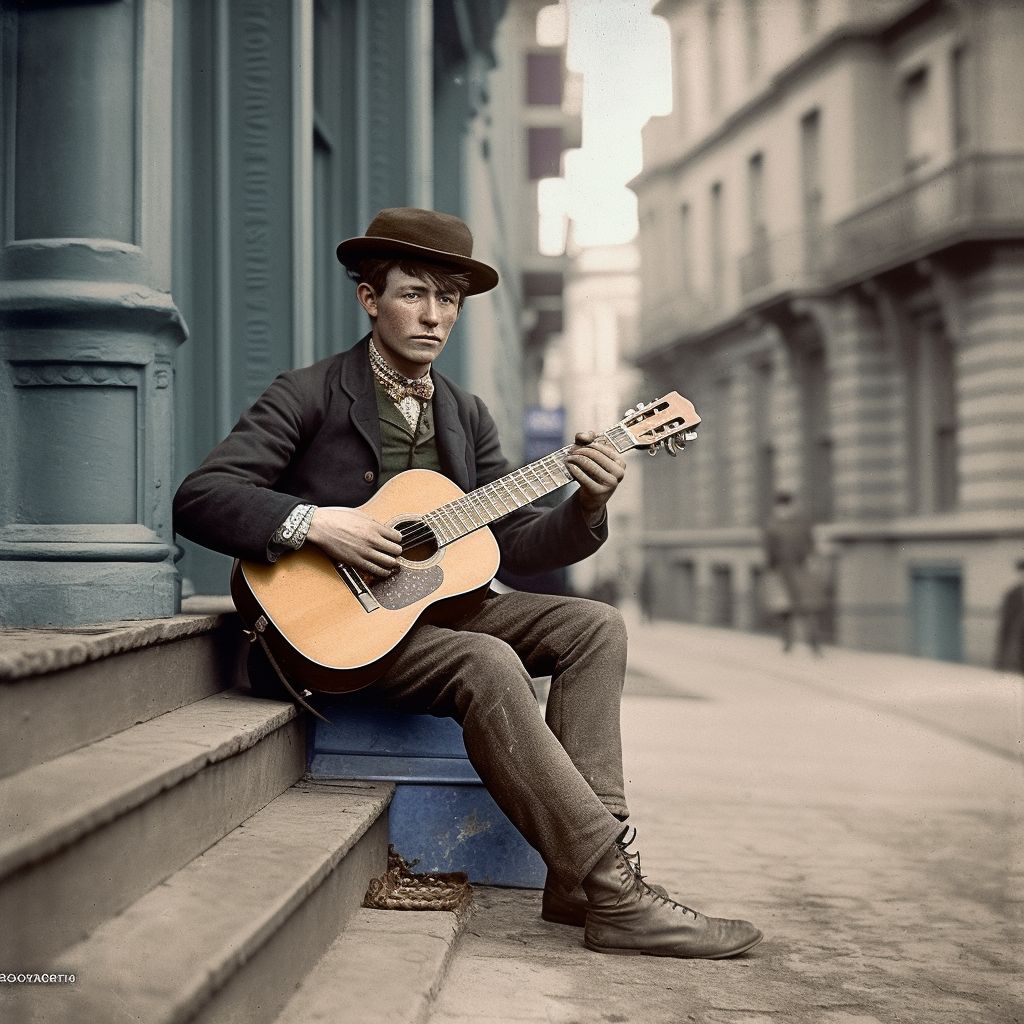Busker
Busking, or street performance, has been a part of American culture since the early days of the nation. In 1880, buskers were a common sight on the bustling streets of cities and towns across the United States. This article aims to provide an overview of the busker profession in the United States during the late 19th century, highlighting the various types of performances and the challenges faced by these street artists.
Types of Buskers and Performances
In 1880, buskers in the United States were a diverse group of performers, encompassing a wide range of talents and skills. Some of the most common types of buskers during this time included:
Musicians: These buskers played a variety of instruments, such as violins, guitars, banjos, and harmonicas, and often performed solo or in small groups.
Singers: Vocalists often performed popular songs of the day or traditional folk tunes, either a cappella or accompanied by an instrument.
Dancers: Various styles of dance, from tap and clog dancing to more theatrical and acrobatic performances, were showcased by buskers on the streets.
Magicians and illusionists: These performers entertained passersby with sleight-of-hand tricks, illusions, and other feats of magic.
Jugglers, acrobats, and other physical performers: These buskers displayed their agility and dexterity through feats of balance, juggling, and other physical acts.
Living statues and mimes: These artists remained motionless or performed silent, pantomime routines to captivate audiences.
Challenges Faced by Buskers
Buskers in the United States in 1880 faced several challenges in their pursuit of a livelihood. Some of these challenges included:
Competition: Buskers often competed with other street performers for prime locations and the attention of potential patrons.
Legal restrictions: Some cities and towns had ordinances in place that regulated or prohibited street performances, which could lead to fines or arrest for buskers.
Unpredictable income: Buskers relied on the voluntary donations of passersby, making their income inconsistent and often meager.
Weather: Buskers were exposed to the elements, making it difficult to perform during inclement weather or extreme temperatures.
Public perception: While many people appreciated and enjoyed buskers' performances, others viewed them as a nuisance or as individuals engaging in begging.
Despite these challenges, buskers in 1880 continued to be a significant part of American street life. Their performances provided entertainment, culture, and a sense of community for both locals and visitors alike.
Conclusion
The busker profession in the United States in 1880 was a vibrant and diverse aspect of American culture. These street performers brought music, dance, magic, and other forms of entertainment to the public, enriching the urban landscape and contributing to the unique character of cities and towns across the country. While buskers faced numerous challenges in their pursuit of a livelihood, their resilience and dedication to their craft ensured that they remained an enduring presence on the streets of America during this time.
Type
Entertainment

